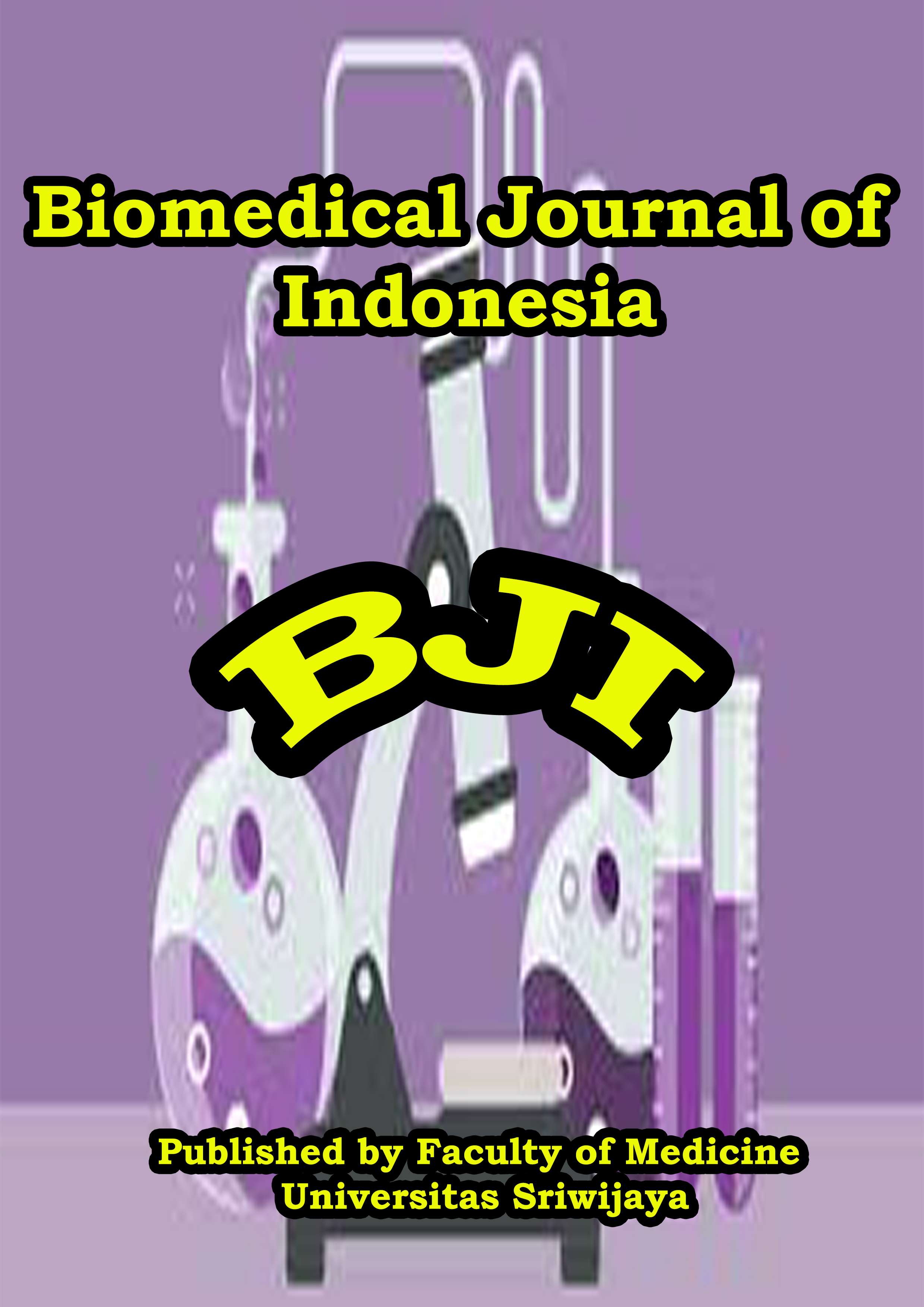Risk of Vitamin D Deficiency in Medical Students Based on The Characteristics of Food Intake and Sun Exposure
Main Article Content
Introduction. The need for Vitamin D can be fulfilled through direct synthesis from Vitamin D stores in the skin with the help of ultraviolet B rays. Therefore, sufficient Vitamin D intake and sun exposure are needed. Most of the activities of medical students on campus are indoors from morning to evening, so it is suspected that there is a risk of Vitamin D deficiency. The purpose of this study was to identify the risk of Vitamin D deficiency based on the characteristics of Vitamin D from food intake and sun exposure in Faculty of Medicine students, Universitas Sriwijaya. Methods. This research was a descriptive study using a questionnaire and observation. Age, sex, BMI and use of related drugs were recorded. The food survey method used was the repeated food recall which was then analyzed using Nutrisurvey 2007. Subjects filled out a questionnaire to obtain data on exposure scores and sun protection scores. The research subjects were students of the Faculty of Medicine, Universitas Sriwijaya who were willing to sign informed consent and were present at the time of sampling. Results. The results from the data of 259 subjects showed that 98.8% of the subjects did not meet their vitamin D intake needs, with an average consumption of 123 ± 142 IU. Types of food that contribute the most Vitamin D are catfish (40%) and eggs (20%). None of the subjects took supplements containing Vitamin D. Sun exposure was sufficient for most subjects (62.9%), but most subjects were at risk of deficiency due to the use of sun protection (62.2%) Conclusion. There is a risk of deficiency in most medical students due to a lack of Vitamin D intake and the use of sun protection.

